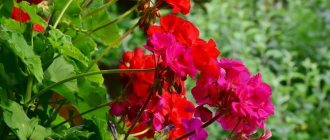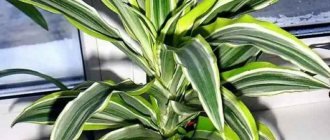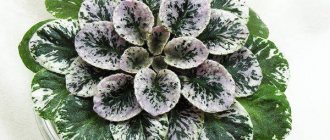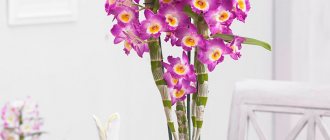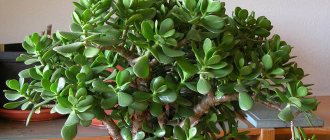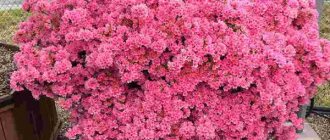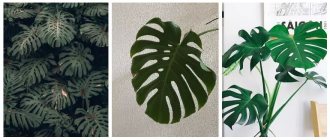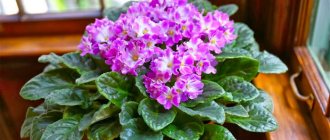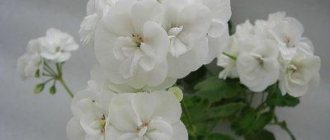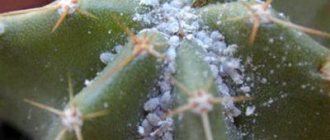Features of Tradescantia
Tradescantia is a not very tall herbaceous perennial plant that has creeping or straight stems. Alternately arranged leaf plates can have different shapes; depending on the type, it can be elliptical, lanceolate or ovoid. The formation of inflorescences occurs from the axils of the apical leaf plates. Tradescantia is one of the hanging plants that are most popular among gardeners. Thanks to regular pinching, the bush becomes lush and branchy. Most often, a pot with such a flower is placed on a high shelf or in a hanging vase so that the long stems can hang freely. During flowering, blue or violet-blue flowers form on the bush. Tradescantia is also used to decorate aquariums. To do this, the flower is placed in such a way that its stems are immersed in the water of the aquarium and form a green, spectacular mat.
This plant also has medicinal properties. It helps purify the air in the room and can also neutralize electromagnetic radiation. The cut branches of this plant, placed in water, can stand there for several months, and sometimes for about a year. But for this you need to regularly add fertilizer to the water.
Medicinal properties
The beauty of the plant and how it is used in various design solutions can be judged from the photo of Tradescantia. But there are also reasons why Buddhist monks grew this flower.
- A long time ago, they knew about the content of elements in Tradescantia that can help in the treatment of certain diseases. External and internal use is practiced. The leaves can heal wounds.
- In Cuba they made medicines from tradescantia for indigestion, in Jamaica for tuberculosis, and in Venezuela they used it for diabetes.
- Animals know about the properties of the flower, which is why cats love to gnaw its leaves.
- In modern medicine, the medicinal properties of tradescantia are also used to get rid of purulent wounds, boils, periodontal disease and hematomas.
Brief description of cultivation
- Bloom . Tradescantia is grown as an ornamental foliage plant.
- Illumination . Slight shading or bright, but necessarily diffused light. Please note that variegated varieties need more sunlight, but direct sunlight can damage them too.
- Temperature regime . In the spring and summer, the air temperature should be about 25 degrees, and in the cold season - no more than 12 degrees.
- Watering . During the growing season, water abundantly and systematically, immediately after the top layer of soil mixture in the pot has dried. During a cool winter, watering is carried out only when the substrate in the container is completely dry, but if the flower overwinters in a warm place, then it should be watered immediately after the earthen ball has dried to ¼ of its depth.
- Air humidity . Grows well at low levels of air humidity, typical for residential premises.
- Fertilizer . Fertilizing is carried out only in the spring-summer period regularly once every half month, while it is recommended to use organic matter and mineral fertilizers alternately. It is better not to feed variegated varieties with organic fertilizers.
- Rest period . It is not clearly expressed.
- Trimming . In spring time.
- Transplant . It is carried out together with pruning. Young bushes are replanted every year, and adult bushes - once every 2 or 3 years.
- Soil mixture . If you wish, you can buy a ready-made soil mixture for Tradescantia. But you can also make it yourself by combining turf, leaf and humus soil, as well as sand in a ratio of 2:4:2:1.
- Reproduction . By dividing the rhizome, cuttings and seed method.
- Harmful insects . Thrips, scale insects and spider mites.
- Diseases . If the plant is not properly cared for or is not provided with comfortable conditions for growth, then its shoots may become bare, rot may appear, and this also leads to the foliage becoming faded, or spots appearing on it, or its tips become brown.
- Properties . Tradescantia pallidum can cause skin irritation.
Tradescantia, the most compact and slow-growing variety!
